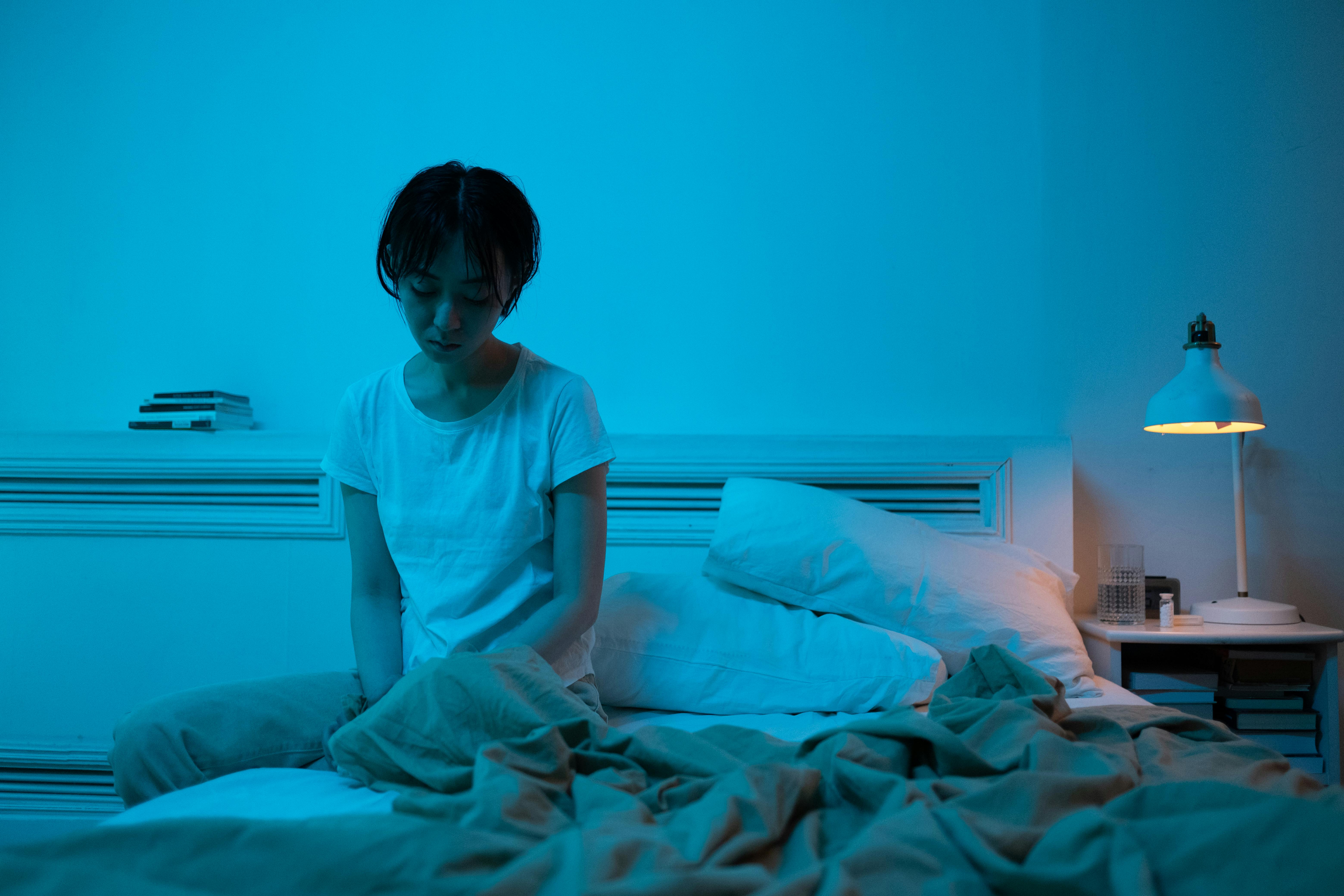As the days grow shorter and the nights longer, many of us find ourselves feeling a bit down. For some, however, this shift goes beyond a simple case of the “winter blues” and develops into a more serious condition known as Seasonal Affective Disorder (SAD), or seasonal depression. If you’ve ever felt like hibernating until spring, you’re not alone. Let’s explore this common but often misunderstood condition and discover ways to bring more light into the darker months.
What is Seasonal Affective Disorder?
Seasonal Affective Disorder is a type of depression that’s related to changes in seasons. Most commonly, SAD begins and ends at about the same times every year. If you’re like most people with SAD, your symptoms start in the fall and continue into the winter months, sapping your energy and making you feel moody.
Dr. Norman Rosenthal, the psychiatrist who first described SAD in the 1980s, explains it this way: “SAD is a condition where people’s moods change with the seasons. It’s as though they’re physically and psychologically in tune with the planet.”
The Science Behind the Sadness
So, what exactly causes this seasonal shift in mood? While the exact mechanisms aren’t fully understood, several factors are thought to play a role:
- Circadian Rhythm Disruption: The reduced level of sunlight in fall and winter may disrupt your body’s internal clock, leading to feelings of depression.
- Serotonin Levels: A drop in serotonin, a brain chemical that affects mood, might play a role in SAD. Reduced sunlight can cause a drop in serotonin that may trigger depression.
- Melatonin Balance: The change in season can disrupt the balance of the body’s level of melatonin, which plays a role in sleep patterns and mood.
- Vitamin D Deficiency: Lower levels of sunlight can lead to a drop in vitamin D levels, which has been linked to depressive symptoms.
Recognizing the Symptoms: More Than Just Winter Blues
While it’s normal to feel a bit down during the colder, darker months, SAD goes beyond occasional “winter blues.” Symptoms of SAD may include:
- Feeling depressed most of the day, nearly every day
- Losing interest in activities you once enjoyed
- Having low energy and feeling sluggish
- Having problems with sleeping too much
- Experiencing changes in your appetite or weight
- Feeling hopeless, worthless or guilty
- Having difficulty concentrating
- Having frequent thoughts of death or suicide
It’s important to note that while SAD is most commonly associated with winter, a less common form known as summer-pattern SAD can occur in the spring or early summer.
Who’s at Risk? The Demographics of SAD
While anyone can experience SAD, certain factors may increase your risk:
- Gender: SAD is diagnosed more often in women than in men, but men may have more severe symptoms.
- Age: Younger adults have a higher risk of SAD than older adults. SAD has been reported even in children and teens.
- Family History: People with SAD may be more likely to have blood relatives with SAD or another form of depression.
- Having Depression or Bipolar Disorder: Symptoms of depression may worsen seasonally if you have one of these conditions.
- Living Far from the Equator: SAD appears to be more common among people who live far north or south of the equator.
The Impact of SAD: More Than Just Feeling Blue
Seasonal Affective Disorder can have significant impacts on various aspects of life:
- Work and Productivity: SAD can lead to decreased productivity and increased absenteeism at work or school.
- Relationships: The social withdrawal associated with SAD can strain personal relationships.
- Physical Health: The changes in sleep patterns and appetite can lead to physical health issues over time.
- Mental Health: If left untreated, SAD can lead to more severe depression, social anxiety, and in some cases, suicidal thoughts.
Strategies to Combat SAD
The good news is that there are several effective treatments for SAD. Here are some of the most common approaches:
1. Light Therapy
Light therapy is a first-line treatment for fall-onset SAD. It involves sitting in front of a light therapy box that emits very bright light (and filters out harmful UV light) for about 20 to 30 minutes a day, typically first thing in the morning.
Dr. Kelly Rohan, an expert on SAD, notes: “Light therapy is to SAD what insulin is to diabetes. It’s simply replacing what’s missing.”
Try This: Invest in a light therapy box (look for one that provides 10,000 lux of light) and use it for 20-30 minutes each morning.
2. Psychotherapy
Cognitive Behavioral Therapy (CBT) adapted for SAD can be effective. It focuses on replacing negative thoughts related to winter with more positive thoughts and engaging in enjoyable activities to combat the loss of interest that often occurs in SAD.
Try This: Consider seeking out a therapist who specializes in CBT for SAD. Many now offer teletherapy options.
3. Medication
Antidepressant medications, particularly SSRIs (Selective Serotonin Reuptake Inhibitors), can be effective in treating SAD.
Note: Always consult with a healthcare provider before starting or changing any medication regimen.
4. Vitamin D Supplementation
Some studies suggest that vitamin D supplementation might help improve symptoms of SAD.
Try This: Ask your doctor about getting your vitamin D levels checked and whether supplementation might be right for you.
5. Lifestyle Changes
Several lifestyle modifications can help manage SAD symptoms:
- Regular Exercise: Physical activity can help boost mood and energy levels.
- Healthy Diet: Focus on a balanced diet rich in fruits, vegetables, and whole grains.
- Consistent Sleep Schedule: Maintain a regular sleep routine, even when it’s tempting to oversleep.
- Outdoor Time: Spend time outside during daylight hours, even on cloudy days.
- Social Connections: Stay connected with friends and family, even if you don’t feel like socializing.
Try This: Commit to a daily 15-minute walk outside, regardless of the weather. The combination of exercise, outdoor time, and (if it’s sunny) natural light can be beneficial.
6. Mindfulness and Meditation
Mindfulness practices can help manage stress and improve mood.
Try This: Download a mindfulness app and try a 5-minute guided meditation each day for a week.
7. Creating a Cozy Environment
Embrace the Danish concept of “hygge” by creating a warm, cozy environment at home.
Try This: Invest in some soft blankets, warm lighting, and comfortable loungewear to make your home a cozy retreat.
When to Seek Help: Don’t Go Through It Alone
If you’re feeling down for days at a time and you can’t get motivated to do activities you normally enjoy, see your doctor. This is especially important if your sleep patterns and appetite have changed, you turn to alcohol for comfort or relaxation, or you feel hopeless or think about suicide.
Remember, SAD is a real medical condition. Just as you wouldn’t hesitate to seek help for a physical ailment, don’t hesitate to reach out for help with SAD.
Embracing the Seasons: Finding Beauty in Winter
While managing SAD is crucial, it’s also worth considering how we might shift our perspective on winter. Many cultures celebrate the unique qualities of the colder, darker months. Here are a few ideas:
- Winter Sports: Embrace activities like skiing, ice skating, or snowshoeing.
- Indoor Hobbies: Use the indoor time to develop new skills like cooking, crafting, or learning a musical instrument.
- Appreciation of Nature: Notice the unique beauty of winter landscapes.
- Seasonal Traditions: Create or participate in winter-specific traditions and celebrations.
Conclusion: You’re Not Alone in the Dark
Seasonal Affective Disorder can feel isolating, but remember, you’re not alone. Millions of people worldwide experience SAD, and with increased awareness, the stigma surrounding it continues to decrease.
If you’re struggling with SAD, know that there are effective treatments available. Don’t hesitate to reach out to a healthcare provider, a mental health professional, or a trusted friend or family member for support.
As we navigate the darker months, let’s remember that spring always follows winter. With the right tools and support, you can find light even in the darkest seasons. After all, as author Albert Camus once wrote, “In the midst of winter, I found there was, within me, an invincible summer.”
Take care of yourself, reach out for help when you need it, and remember: brighter days are always ahead.
Build habits to combat SAD with Hapday,Your Wellbeing Assistant
Join the millions of people using Hapday. Improve overall wellness & sleep.




